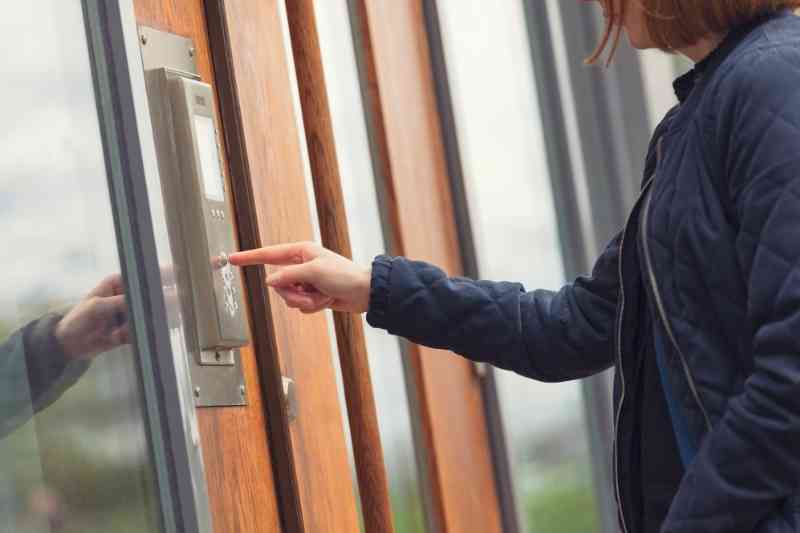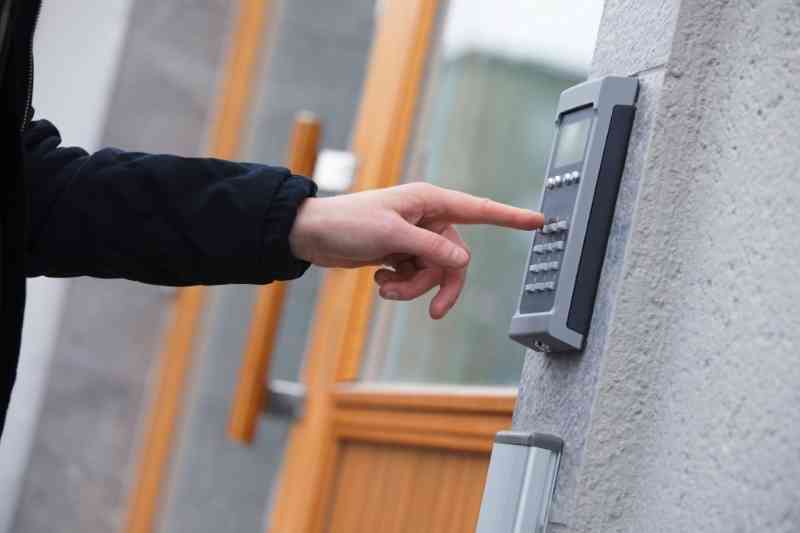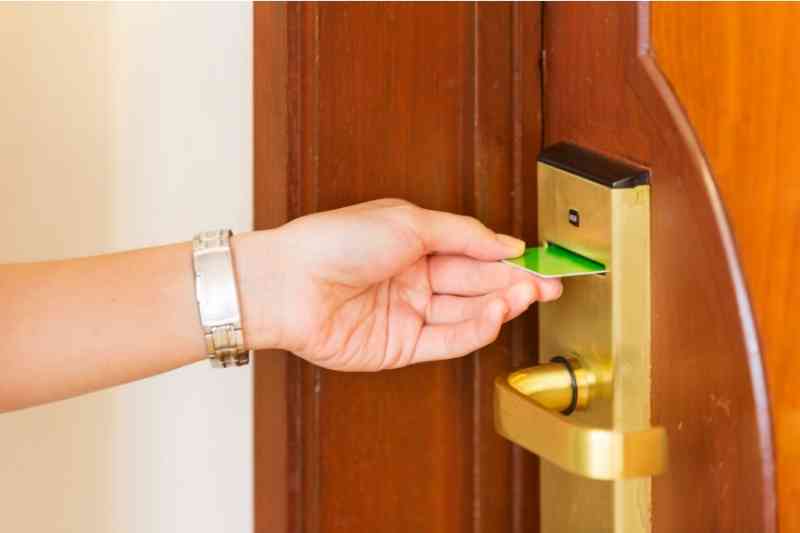Key takeaways
- The IP door entry system is a next-generation way to control access for every part of your property.
- An IP door station uses base stations, substations, and electric locks to manage access.
- Compared to an analog system, IP entry systems are easier to install, maintain, and use for both staff and residents.

Choosing a door entry system to quickly and conveniently manage access is a big responsibility. Your tenants expect ease of access for themselves, in addition to the ability to remotely grant access to guests. So, installing an IP door entry system is the best way to control access into your building.
This post explains what an IP door entry system is and how it works. Then, we compare an IP entry system to a traditional entry system and help you choose the best building entry solution for your needs.
This post covers:
- What is an IP door entry system?
- How does an IP door entry system work?
- IP door entry system vs. analog door entry system
- The best IP door entry system
What is an IP door entry system?
An IP door entry system is an IP (internet protocol) device that connects a guest at a building’s entrance to a tenant who can remotely grant door access. IP door entry systems can manage access for all kinds of doorways, from exterior building entrances to doorways for interior spaces like gyms or co-working areas.
Door entry systems have been around for decades. In the early days of the door entry intercom system, you had to connect the system’s hardware with wiring. Only recently have door entry and access control systems begun to use the internet instead.
IP door entry systems are used by both residential and commercial properties. In either case, tenants can communicate with visitors seeking access and remotely unlock the door or gate for them. Some IP entry systems require you to install hardware in every unit. However, more modern systems allow residents to use their smartphones instead of an in-unit device.
Either way, the hardware a tenant uses to connect with an IP entry system is called a substation.
Watch how ButterflyMX works:
Components of an IP door entry system
IP door entry systems have three main components: substations, base stations, and electric locks.
- Base stations are installed at and manage access for a specific doorway. A guest uses a base station to request access, while a resident uses it to unlock the door for themselves with a credential. For example, a resident might use a mobile app, a PIN code, or an electronic key for an IP key fob door entry system.
- Substations are the hardware that a resident uses to grant access to a visitor. Substations vary in shape and size. While some substations are mounted on a wall, more advanced door entry systems allow a tenant to use their smartphone as a substation — saving you money on installation costs.
- Electric locks physically release to unlock the door when signaled. Electric locks or magnetic locks are the actual physical component that releases to allow a guest to open the door.

How does an IP door entry system work?
A multi-tenant IP door entry system works by transmitting audio (and sometimes video) signals from a base station installed at a property entrance to a substation controlled by a resident. IP systems use the internet for these communications.
When computers want to transmit data using the internet, they need to use an organizational set of rules called the Internet Protocol. That’s what the ‘IP’ stands for. Without Internet Protocol rules, data sent between two computers might arrive in the wrong order, or might not even arrive at all.
While the Internet Protocol is important, it’s not the only protocol that computers use to carry audiovisual communications. Another significant protocol is the Session Initiation Protocol, leading some providers and installers to use the term ‘SIP door entry system’. But whether a door entry system is referred to as IP or SIP, a guest using that system to contact a resident will follow the same general steps.
Here’s how a guest uses an IP entry system to contact a resident:
- Guest calls resident. Base stations contain directories that allow a guest to select the resident they’re visiting.
- Resident and guest communicate. A microphone in the base station allows guests to speak to the resident they called. Some IP video door entry systems also include a camera, enabling video calls.
- Resident grants entry using substation. After verifying their guest’s identity, the resident grants entry by pressing a button on their substation.
- Electric lock releases. After the electric lock receives a signal from the substation and releases, the guest can open the door and enter.
IP door entry system vs. analog door entry system
Now that you know what an IP entry system is and how it works, let’s cover the benefits of an IP door entry intercom system. As you’ll see, internet-based technology gives an IP system many more features and benefits than are available to a traditional analog system.
Benefits of an IP door entry system include:
- Cloud-based management. Because IP doorbell intercom entry systems are connected to the internet, you can manage them from anywhere, on any device. If a staff member happens to be offsite, they can manage the directory and update access permissions without causing a hitch in the resident experience.
- Wireless capabilities. Previous generations of door entry systems had to depend on wiring, which degrades easily and is expensive to install and maintain. Installing or maintaining a wired system involves ripping up walls and floors. Taking these factors into account, a wired system quickly becomes more trouble than it’s worth.
- Integrations with other access control hardware. An analog door entry system might adequately manage access for the doorway where it’s installed. But connecting two analog door systems is cost-prohibitive. On the other hand, integrating IP entry systems with one another is quick, easy, and requires no extra hardware or other modifications.

The best IP door entry system
ButterflyMX is the best IP door entry system. Compared to other building entry systems, ButterflyMX sets itself apart from competitors by focusing on convenience, security, and ease of installation.
Other IP entry systems have one big pain point when it comes to installation and maintenance: substations. It’s true that IP substations are generally wireless and easier to install. However, you’ll still have to install and maintain a lot of hardware throughout your building. ButterflyMX, on the other hand, frees you from those hassles by giving residents the ability to open doors with their smartphones.
ButterflyMX extends throughout an entire building, encompassing vital access points with a suite of intercoms, keypads, and elevator controls. And when residents can manage building-wide access from their smartphones, they enable seamless access for themselves, visitors, and delivery carriers. For example, a resident can use our app to assign one-time Delivery Passes for couriers and multi-use virtual keys to recurring guests.
Building staff can also maintain security using the ButterflyMX OS, which allows them to access an audit trail of all door releases. Staff will also appreciate ButterflyMX’s integrations with property management services, simplifying administration by creating one central management hub.
